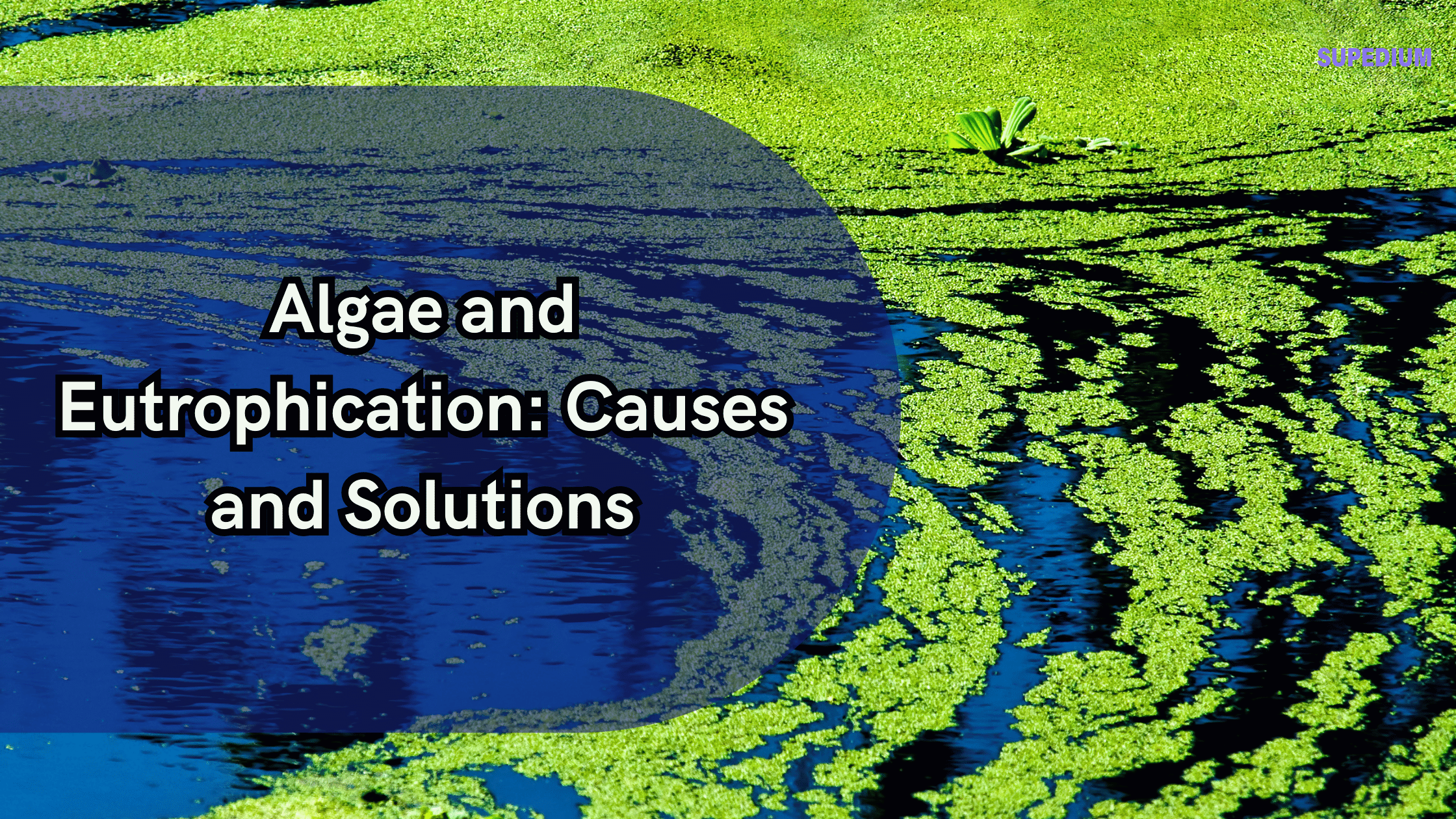Table of Contents
![]()
Eutrophication is a significant environmental issue characterized by the enrichment of water bodies with nutrients, leading to excessive growth of algae and other aquatic plants. This phenomenon can have severe repercussions for aquatic ecosystems, water quality, biodiversity, and human health. Understanding the causes of eutrophication, its consequences, and potential solutions is crucial for mitigating its impact.
Understanding Algae and Their Role in Aquatic Ecosystems
Algae are diverse organisms that play vital roles in aquatic ecosystems. They are broadly categorized into three types:
- Phytoplankton: These microscopic algae, including diatoms and dinoflagellates, float in the water column and are the primary producers in aquatic environments, forming the base of the food web.
- Macroalgae: These are larger, visible algae like kelp and seaweeds, which provide habitat and food for marine organisms.
- Periphyton: Algae that grow on surfaces like rocks and submerged plants, contributing to the aquatic habitat.
Algae contribute significantly to primary production, oxygen generation, and nutrient cycling. However, their overgrowth can disrupt ecological balance.
Causes of Eutrophication
Eutrophication primarily results from the excessive input of nutrients into water bodies. The main sources include:
- Agricultural Runoff: Fertilizers and manure used in agriculture contain high levels of nitrogen and phosphorus. When these nutrients are washed into rivers and lakes through runoff, they stimulate algal growth.
- Urban Runoff: In urban areas, stormwater can carry pollutants, including nutrients from fertilizers and other sources, into nearby water bodies. Additionally, wastewater discharge from households and industries contributes to nutrient pollution.
- Industrial Discharges: Industrial activities can release nutrients through wastewater and other processes, adding to the nutrient load in aquatic systems.
- Atmospheric Deposition: Airborne nitrogen compounds, such as nitrogen oxides (NOx) from combustion processes, can settle on water bodies, contributing to nutrient enrichment.
- Natural Causes: Although less common, natural events such as volcanic eruptions, geothermal springs, and soil erosion can also contribute to nutrient loading in water bodies.
Consequences of Eutrophication
Eutrophication can lead to several adverse effects:
- Algal Blooms: Excessive nutrient enrichment can cause rapid and dense growth of algae, resulting in algal blooms. Some blooms, such as those caused by cyanobacteria or dinoflagellates, can be harmful and produce toxins.
- Oxygen Depletion: When algae die and decompose, the process consumes large amounts of oxygen in the water, leading to hypoxia (low oxygen levels) or anoxia (no oxygen). This can result in the death of fish and other aquatic organisms.
- Loss of Biodiversity: The changes in nutrient levels and oxygen availability can disrupt food webs, leading to the decline or migration of sensitive species and a reduction in overall biodiversity.
- Economic Impacts: Eutrophication can affect fisheries by reducing fish populations, hinder recreational activities such as swimming and boating, and increase the costs associated with water treatment.
Solutions to Eutrophication
Addressing eutrophication requires a multifaceted approach involving nutrient management, policy, restoration efforts, and public education:
- Nutrient Management:
- Agricultural Best Practices: Implementing controlled use of fertilizers, establishing riparian buffer zones, and adopting practices like cover cropping and reduced tillage can significantly reduce nutrient runoff from agricultural lands.
- Urban and Industrial Measures: Green infrastructure, such as green roofs and permeable pavements, can help manage stormwater runoff. Improved wastewater treatment technologies can also reduce nutrient discharge from urban and industrial sources.
- Policy and Regulation:
- Legislation: Enforcing regulations on nutrient management and water quality standards can help control nutrient pollution. Policies that limit nutrient discharge from various sources are essential.
- Incentive Programs: Providing subsidies for best management practices and funding research and conservation efforts can encourage the adoption of measures to combat eutrophication.
- Restoration and Remediation:
- Wetland Restoration: Restoring wetlands can enhance their role in nutrient removal and provide additional ecological benefits.
- Mechanical Removal of Algae: Techniques such as harvesting algae, aeration, and water circulation can help manage algal blooms and improve water quality.
- Public Awareness and Education:
- Community Involvement: Engaging local communities in monitoring and conservation efforts can foster a sense of stewardship and contribute to eutrophication management.
- Educational Campaigns: Raising awareness about the impacts of nutrient pollution and promoting best practices can help reduce nutrient inputs from individual and collective actions.
Case Studies
Several regions have successfully managed eutrophication through various strategies:
- Lake Erie: Efforts to reduce phosphorus inputs from agricultural runoff and wastewater discharge have led to improvements in water quality and reductions in harmful algal blooms.
- Chesapeake Bay: A comprehensive approach involving nutrient reduction strategies, restoration projects, and policy initiatives has yielded positive results in water quality and ecosystem health.
Despite these successes, challenges remain, and continued efforts are necessary to address ongoing issues and adapt strategies based on lessons learned.
Future Directions
Future strategies for managing eutrophication will likely involve:
- Emerging Technologies and Innovations: Advances in monitoring, data collection, and remediation technologies can enhance our ability to manage eutrophication more effectively.
- Global and Local Strategies: Integrative approaches that combine global cooperation with local actions can address eutrophication more comprehensively.
Conclusion
Eutrophication is a complex issue with far-reaching effects on aquatic ecosystems, water quality, and human well-being. By understanding the causes and consequences of eutrophication and implementing effective solutions, we can work towards healthier and more sustainable water bodies. Continued research, policy development, and public engagement are essential to address this challenge and protect our aquatic environments.
Share This





Be the first to comment